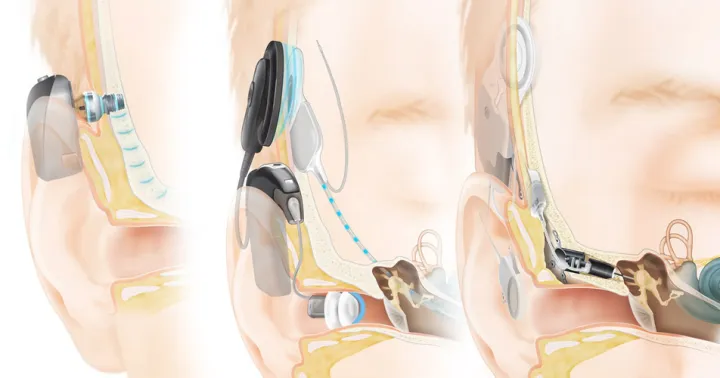
Cochlear Implant

What is a Cochlear Implant?
The Cochlear Implant (CI) is an electronic device, partially implanted, which provides users with a with a sense of hearing similar to our normal way of hearing. Unlike a personal sound amplification product (PSAP) which is indicated for different degrees of hearing impairment, including severe cases, the cochlear implant is recommended for those with significant hearing disorders in which residual hearing is compromised.
The external part of a cochlear implant consists of a microphone, a speech microprocessor, and a transmitter. The internal part has a receptor, a stimulator, a reference electrode and a set of electrodes that are inserted into the cochlea. Through these electrodes implanted inside the cochlea, the device stimulates the auditory nerve which, in turn, carries these as signals to the brain where they will be decoded and interpreted as sounds.
It is worth remembering that early diagnosis of the cause of hearing loss, preferably before 12 months of age, is of paramount importance. Identifying the cause of any change in hearing at this age is considered ideal as the auditory system is still quite plastic. The sooner that intervention begins, the better the prognosis. Delaying diagnosis affects language acquisition and interpersonal development.
At the age of three and a half, a critical period begins which lasts until the age of seven. After this period, the plasticity of the auditory system is no longer the same and, therefore, the success of a cochlear implant varies from child to child. After this period, the chances of a good prognosis decrease considerably.

